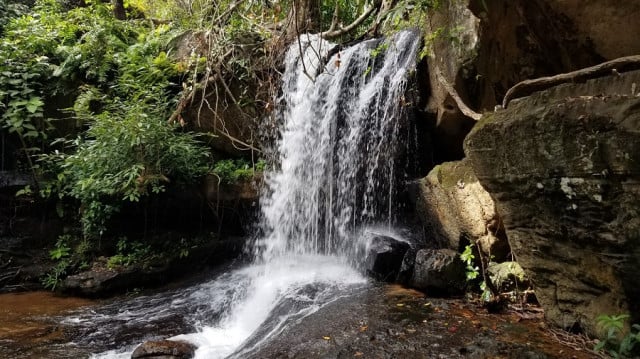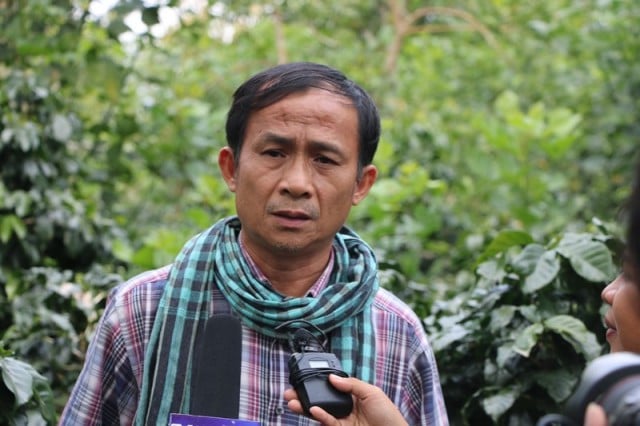Kbal Spean: Divine Water through the Valley of the 1,000 Lingas

- By Long Ton
- June 11, 2022 5:01 PM
Both a tourist attraction and an archaeological site, Kbal Spean is located about 200 meters above sea level on the western slope of Kulen mountain in Siem Reap Province, more than 300 kilometers from Phnom Penh.
After a 1, 500-meter hike from the parking area at the foot of the mountain, tourists can have a close look at the sculptures and enjoy the waterfall that flows through during the rainy season and the early dry season. However, reaching the site can be challenging as the trail is smooth at times but turns more difficult to walk along in some parts. Visitors must navigate the uneven terrain through rocky areas, the dirt trail and even wooden ladders before reaching their destination. If they get really tired, they can take a break and rest at the pavilion along the way.
One of the many archaeological sites on the slopes of Kulen mountain, Kbal Spean is one that has been thoroughly studied by several archaeologists since the start of the 20th century. By 1968, Jean Boulbet of the French School of Asian Studies—or École française d'Extrême-Orient (EFEO)—had conducted extensive research at Kbal Spean with the help and support of the local community. As a result, his study produced a broader range of detailed information on the ancient site than prior research had managed to do. Then in 2002, another significant study was conducted by Chhay Rathana: His thesis done while an archeology student at the Royal University of Fine Arts has contributed new findings on the subject.
When visiting the Kbal Spean archaeological site, it is impossible to miss the wonderful, sculpted features. These sculptures date from the Angkorian period, around the 11th century. Kbal Spean was created mainly during the reign of King Udayadityavarman II. According to the inscriptions that researchers have deciphered, the site was given the name of Sahas Leung, or the Valley of a Thousand Lingas—lingas being representations of Lord Shiva.
In addition to inscriptions, there are also sculptures set horizontally at the riverbed and along the large boulders. Most of them are associated with Hindu deities, and especially the trinity of Lord Narayana, Lord Brahma and Lord Shiva. Moreover, there are sculptures of Shiva Lingam embedded just below the surface of the water. These sculptures can sometimes be seen as individual features and sometimes as part of a group.
More importantly, at the starting point of the Valley of a Thousand Lingas stands a giant-sized linga. It is shaped like a circle, or a disk, and placed on a rectangularly framed Yoni, a symbol of the goddess Shakti and of women giving life. In addition, other lingas were sculpted from a sideways perspective which resulted in elongated or taller figures.
Last but not least, there is a special, small pool located above the waterfall and featuring stories’ portrayals. Unfortunately, the images and sculptures on the pool’s walls can only be seen during the dry season. It is believed that, during the Angkor period, once the water was flowing across or touched the sculptures, it would turn divine. The water symbolizes the heavenly Ganges River as it flows to bless and purify the Earth.
At the end of its course, the Kbal Spean water flows directly into the Siem Reap River.
Today, the Kbal Spean archeological site continues to be a sacred place for international Hindu worshippers who come to visit. As for the national tourists, those who still view in a religious perspective this godly site bring some of this sacred water to their homes so it will bring blessings and happiness to their families.
You can reach the Kbal Spean archaeological site by traveling along National Road 66 about 15 kilometers from the Banteay Srei District Hall in Siem Reap Province.
Long Ton is a Cambodian with a passion for Angkor and that era. A university graduate who speaks several languages, he has conducted tours at Angkor.
Song Daphea contributed to the story















